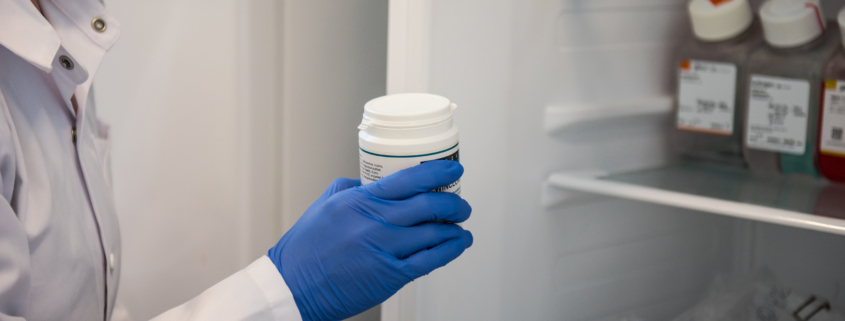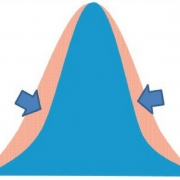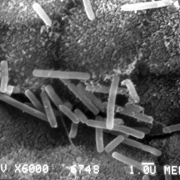Current status of research on probiotic and prebiotic mechanisms of action
By Mary Ellen Sanders, PhD, ISAPP Executive Science Officer
Human intervention studies in the fields of probiotics and prebiotics assess the health effects of these ingredients, whether it’s improving specific symptoms or preventing the occurrence of a health condition. Yet scientists in the field recognize the importance of learning the ‘chain of events’ by which probiotics and prebiotics are able to confer health benefits. Such mechanistic insights allow better probiotic selection and development of therapeutic approaches, as well as more precise dosing.
Mechanisms of action for probiotics and prebiotics are complex and often difficult to pinpoint, especially since any given health benefit may derive from multiple co-functioning mechanisms. However, scientists have made incremental gains in understanding these mechanisms. This scientific progress was covered in a recent webinar co-presented by ISAPP and ILSI-Europe, titled Understanding Prebiotic and Probiotic Mechanisms that Drive Health Benefits. Speakers for the webinar were:
- Sarah Lebeer, University of Antwerp, Belgium
- Colin Hill, University College Cork, Ireland
- Karen Scott, University of Aberdeen, UK
- Koen Venema, Maastricht University – campus Venlo, The Netherlands
The webinar was held live on September 17, 2020. Of the 499 webinar registrants, 357 attended the webinar live from 57 countries, from Australia to the US. ISAPP and ILSI-Europe hope the webinar will serve as a resource for people who want a rapid overview about mechanisms of action.
Watch the full webinar here, and read further for a summary of key points from these experts.
Prebiotic benefits and mechanisms of action
Prebiotics are defined as substrates that are “selectively utilized by host microorganisms conferring a health benefit”. ‘Utilization’ in the gut may involve crossfeeding, which means products produced by the first microbes degrading the prebiotic can then be used by different members of the host microbiota – so it may take a series of complex steps to get to a final health outcome. However, selective utilization and health benefit are always required for a substance to meet the definition of a prebiotic.
The health benefit of a prebiotic can be local (in the gut) or systemic. Locally, prebiotics can act via fecal bulking, as they are typically types of fiber. In addition, they can produce short-chain fatty acids (SCFAs), which reduce gut pH and thereby can discourage pathogenic and toxigenic activity of gut microbes, increase calcium ion absorption and provide energy for gut epithelial cells.
Systemic functions of prebiotic metabolism include them being used as substrates for microbes that produce or interact with host cells to produce molecules with neurochemical, metabolic or immune activity. Further, SCFAs can end up in the blood and can reach the liver, muscles and the brain. The SCFAs interact with specific host receptors and can lead to the release of satiety hormones or interact with receptors in the liver, adipose tissue and muscle tissue, leading to reduced inflammation. Prebiotics can also interact directly with immune cells.
Probiotic health effects and mechanisms of action
Health and disease are the end results of complex interactions on a molecular scale within a human or animal host. Host molecules also interact with microbial molecules, including those molecules introduced with or produced by probiotics. Designing studies to discover probiotic mechanisms in human research is extremely challenging because both host and probiotic are very complex systems that most probably engage with one another on multiple levels. Probiotic molecules can have direct effects and downstream effects, and we are aware of only a few cases where a health effect can be tied to one specific probiotic molecule.
Probiotics can interact directly with the host, but also can act indirectly by influencing the microbiome. There may be many different mechanisms by which a given probiotic interacts with the host.
It is interesting to note that probiotics use some of the same types of mechanisms (pili, small molecule production, etc.) that are used by pathogens, microbes that have a detrimental effect on the host. But these shared mechanisms are usually connected to surviving or colonising strategies, not those that cause damage to the host.
L. rhamnosus GG is a well-researched model probiotic, for which many mechanisms have been identified, including pili, immune modulators and lactic acid production, some mechanisms shared with other probiotic strains and species. Other studies have identified mechanisms for novel types of probiotics. For example, in mice and humans taking a strain of Akkermansia, heat killed cells had the same or even better effect on markers of metabolic health, which implies that the molecules (perhaps proteins in the bacteria, unaffected by heat treatment) are mediating the effect in this case.
See here to watch the webinar in full.















